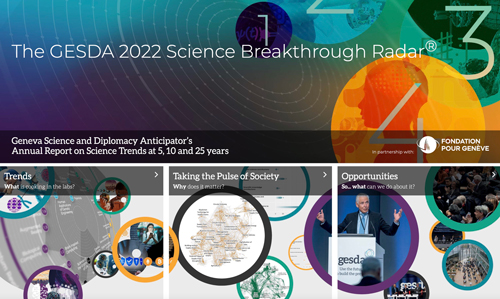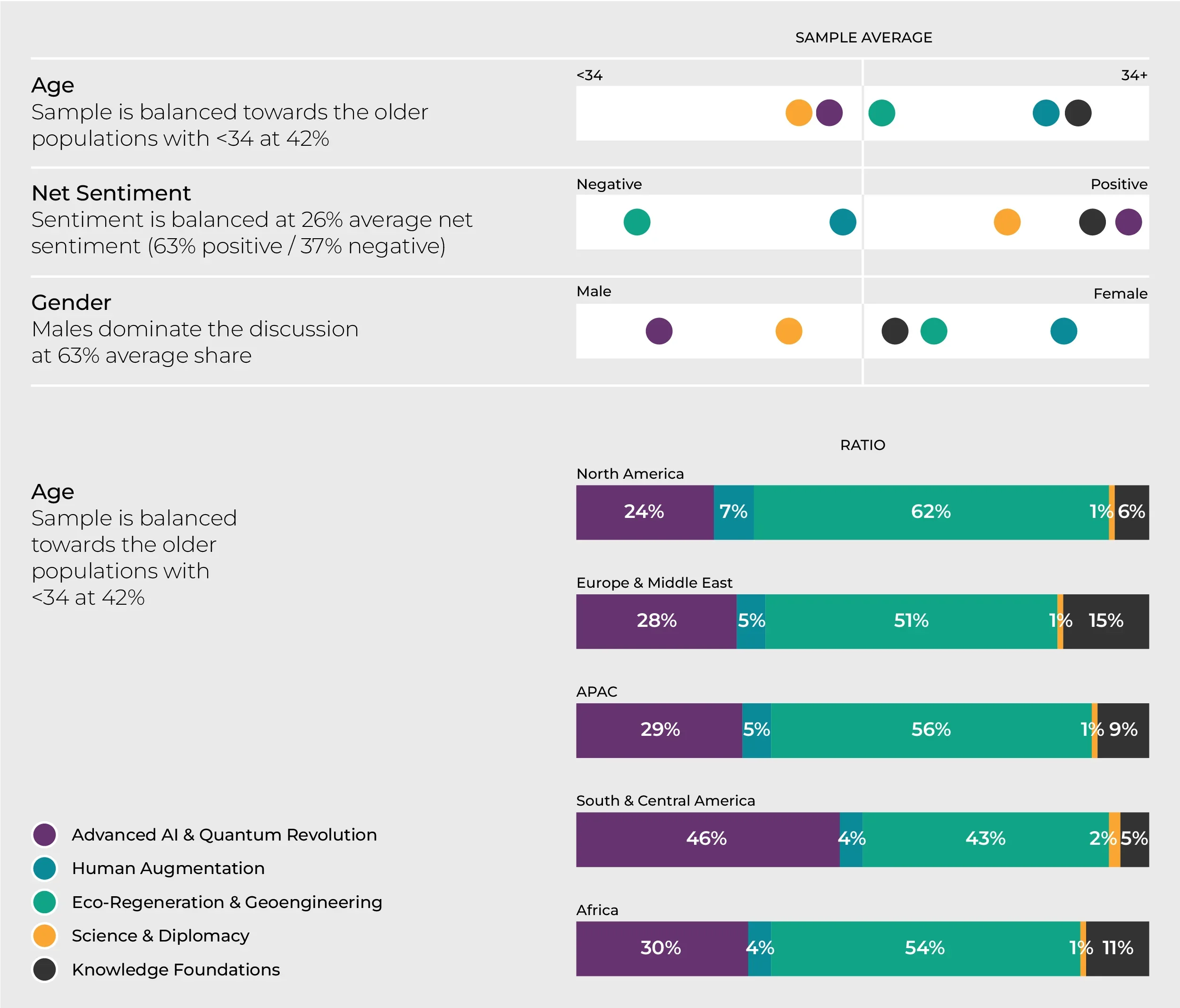We monitor public debate using a machine learning algorithm that analyses conversations about the emerging topics presented in the Radar on the world’s media and online social platforms. We aim to understand how discussions and sentiments about science and technology issues vary between regions, age groups and topics and to help identify the fields that require a broader societal debate.
New for 2023, we analyse changes in sentiment and demographics across different scientific topics from 2021 onwards. This has allowed us to identify trends in the way breakthroughs are being discussed and debated as technologies evolve.
Who is going further than talk? We extend our analysis with a tool for monitoring civil society and private citizen activity around the scientific emerging topics included in the Radar. We focus on four areas of activity: raising public awareness; entrepreneurial endeavours; policy-orientated action that shapes and drives discussions in society; and direct contributions to science and technology — by biohacking, participation in clinical trials or citizen science endeavours, for example.
Across all our platforms, we have found that engagement on social media is skewed towards older contributors, with only 42 per cent of contributors younger than 34 years old. There is an average 26 per cent positive sentiment across the Radar’s emerging breakthroughs, with male contributors (63 per cent of posts) and North Americans (53 per cent of posts) being the most frequent contributors.
Our analysis shows that it is indeed possible to monitor public opinion and activity; in this section of the Radar, we discuss our findings about what people say and do.


